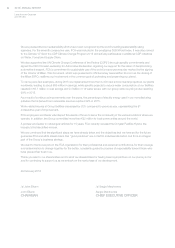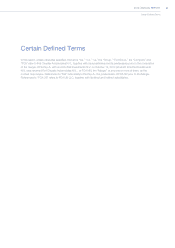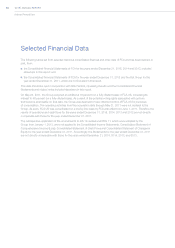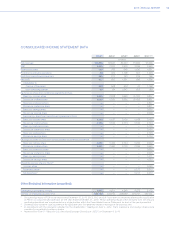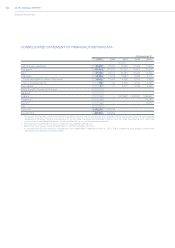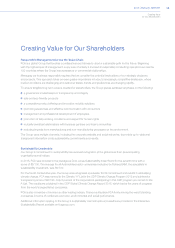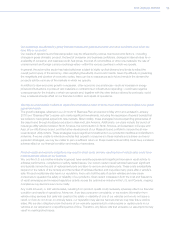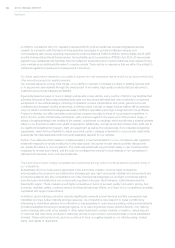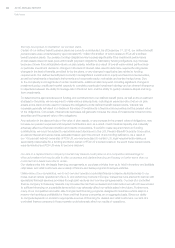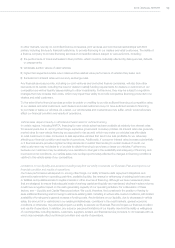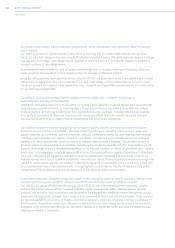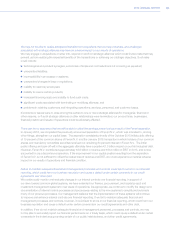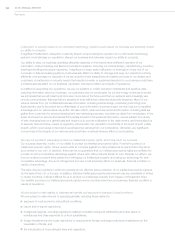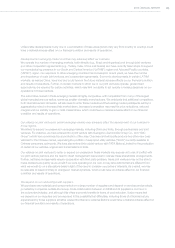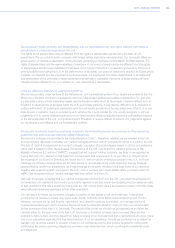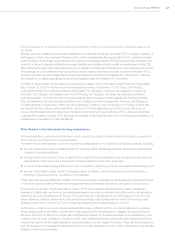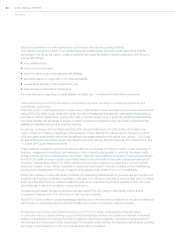Chrysler 2015 Annual Report Download - page 18
Download and view the complete annual report
Please find page 18 of the 2015 Chrysler annual report below. You can navigate through the pages in the report by either clicking on the pages listed below, or by using the keyword search tool below to find specific information within the annual report.
18 2015 | ANNUAL REPORT
Risk Factors
We may be exposed to shortfalls in our pension plans.
Certain of our defined benefit pension plans are currently underfunded. As of December31, 2015, our defined benefit
pension plans were underfunded by approximately €5.1 billion (€4.9 billion of which relates to FCA US’s defined
benefit pension plans). Our pension funding obligations may increase significantly if the investment performance
of plan assets does not keep pace with benefit payment obligations. Mandatory funding obligations may increase
because of lower than anticipated returns on plan assets, whether as a result of overall weak market performance
or particular investment decisions, changes in the level of interest rates used to determine required funding levels,
changes in the level of benefits provided for by the plans, or any changes in applicable law related to funding
requirements. Our defined benefit plans currently hold significant investments in equity and fixed income securities,
as well as investments in less liquid instruments such as private equity, real estate and certain hedge funds. Due
to the complexity and magnitude of certain investments, additional risks may exist, including significant changes in
investment policy, insufficient market capacity to complete a particular investment strategy and an inherent divergence
in objectives between the ability to manage risk in the short term and the ability to quickly rebalance illiquid and long-
term investments.
To determine the appropriate level of funding and contributions to our defined benefit plans, as well as the investment
strategy for the plans, we are required to make various assumptions, including an expected rate of return on plan
assets and a discount rate used to measure the obligations under defined benefit pension plans. Interest rate
increases generally will result in a decline in the value of investments in fixed income securities and the present value
of the obligations. Conversely, interest rate decreases will generally increase the value of investments in fixed income
securities and the present value of the obligations.
Any reduction in the discount rate or the value of plan assets, or any increase in the present value of obligations, may
increase our pension expenses and required contributions and, as a result, could constrain liquidity and materially
adversely affect our financial condition and results of operations. If we fail to make required minimum funding
contributions, we could be subject to reportable event disclosure to the U.S. Pension Benefit Guaranty Corporation,
as well as interest and excise taxes calculated based upon the amount of any funding deficiency. As a result of
our 100 percent indirect ownership of FCA US, we may be subject to certain U.S. legal requirements making us
secondarily responsible for a funding shortfall in certain of FCA US’s pension plans in the event these pension plans
were terminated and FCA US were to become insolvent.
Our lack of a captive finance company in certain key markets could place us at a competitive disadvantage to
other automakers that may be able to offer consumers and dealers financing and leasing on better terms than our
customers and dealers are able to obtain.
Our dealers enter into wholesale financing arrangements to purchase vehicles from us to hold in inventory and facilitate
retail sales, and retail customers use a variety of finance and lease programs to acquire vehicles.
Unlike many of our competitors, we do not own and operate a controlled finance company dedicated solely to our
mass-market vehicle operations in the U.S. and certain key markets in Europe. Instead we have elected to partner with
specialized financial services providers through joint ventures and commercial agreements. Our lack of a controlled
finance company in these key markets may increase the risk that our dealers and retail customers will not have access
to sufficient financing on acceptable terms which may adversely affect our vehicle sales in the future. Furthermore,
many of our competitors are better able to implement financing programs designed to maximize vehicle sales in a
manner that optimizes profitability for them and their finance companies on an aggregate basis. Since our ability
to compete depends on access to appropriate sources of financing for dealers and retail customers, our lack of a
controlled finance company in those markets could adversely affect our results of operations.


